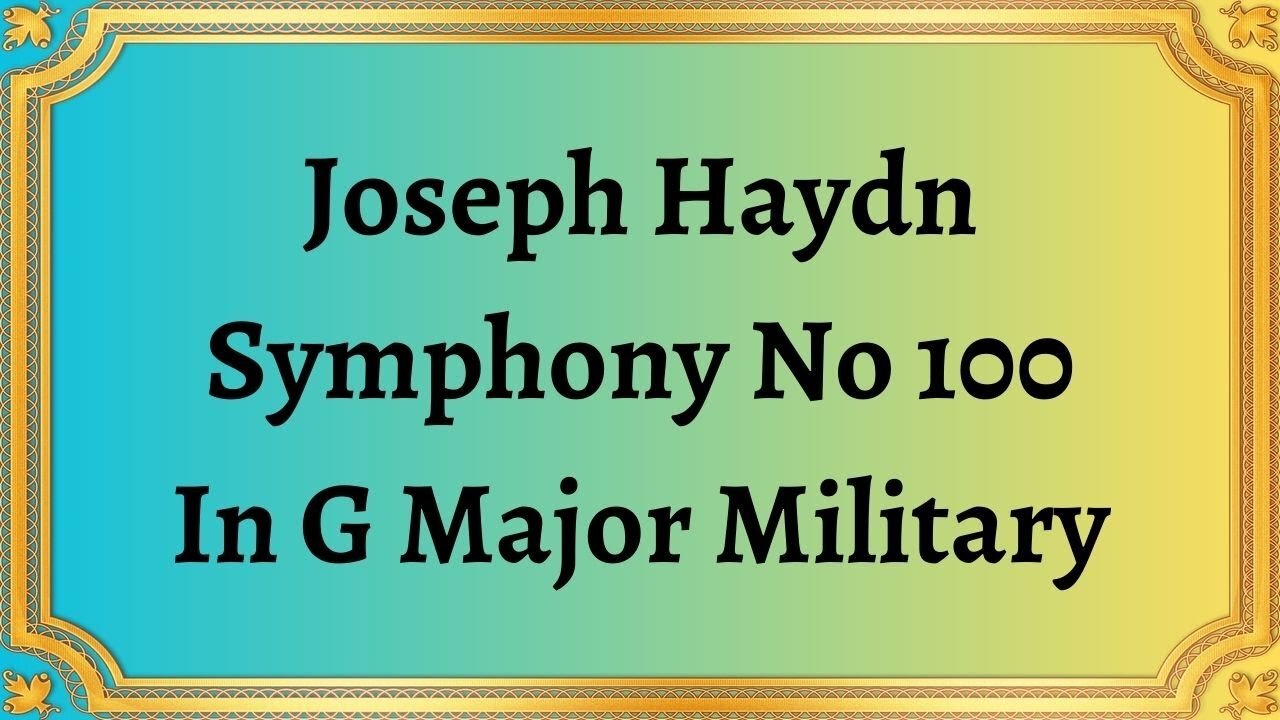Premium Only Content

Joseph Haydn Symphony No 100 In G Major Military
#JosephHaydn #SymphonyNo100 #GMajor #Military #classicalmusic #musicalcomposition #percussion #sonataform #counterpoint #classicalera #orchestralmusic #musicappreciation #musiceducation
Publication date 1950
Wiener Symphoniker; Hermann Scherchen
Joseph Haydn's Symphony No. 100 in G Major, also known as the "Military Symphony," is a remarkable piece of classical music composed during the Classical Era. The work is considered one of the composer's most famous, and it contributed to Haydn's reputation as the "Father of the Symphony."
The symphony is structured in four movements, each with its unique qualities. The first movement is marked by its powerful opening with a call-to-arms-style trumpet solo. The second movement is a slow and somber Adagio that moves to a more dramatic and lively tempo. The unique timbres and harmonies in the second movement feature a full military band, adding an unmistakable martial flavor to the music.
The third movement is marked by its liveliness and quick tempo, with the violins playing off the other instruments to create a stunning interplay of melodies. The fourth movement, known as the Finale, is notable for its rapid tempo and its use of percussion. The military band returns with drums and cymbals, heightening the sense of drama and adding a sense of intensity to the piece.
The unique feature of Haydn's Military Symphony is the use of military instruments and sound of war in the second movement. This sound is accomplished with the use of percussion instruments such as the triangle, bass drum, and cymbals. It was meant to evoke the sound of war and was a reflection of the political climate when the piece was first performed in London.
The Military Symphony is also notable for its unique melodic and harmonic structure, which is typical of the Classical period. Haydn incorporates different musical elements such as counterpoint and sonata form into his work. The precision and energy of the Military Symphony demonstrate Haydn's skill as a composer, as well as his incomparable ability to masterfully weave melodies together.
In conclusion, Joseph Haydn's Symphony No. 100 "Military" is a compelling piece of music that highlights the composer's skill and innovation in the art of symphonic music. Haydn's use of military-style sound in the second movement creates a unique element that elevates the piece beyond most symphonies. The Military Symphony remains one of Haydn's most enduring compositions and has stood the test of time as an excellent example of the beauty and complexity of classical music.
You have the opportunity to support the channel https://destream.net/live/RadSiarAl/donate
-
 6:07
6:07
Classical music_Music Inspiration
1 month agoJoseph Haydn Piano Sonata in D Major, Hob. XVI:51
901 -
 1:37:05
1:37:05
AlaskanBallistics
5 hours ago $1.45 earnedI Love This Gun PodCast #16
22.6K3 -
 2:59:26
2:59:26
Twins Pod
14 hours agoEMERGENCY PODCAST WITH ANDREW TATE! - Twins Pod - Special Episode - Andrew Tate
156K160 -
 2:52:01
2:52:01
Jewels Jones Live ®
2 days agoTRUMP SECURES BORDER | A Political Rendezvous - Ep. 113
79.7K36 -
 25:02
25:02
marcushouse
1 day ago $43.66 earnedStarship Just Exploded 💥 What Went Wrong This Time?!
166K79 -
 12:00
12:00
Silver Dragons
1 day agoBullion Dealer Reveals Best Silver to Buy With $1,000
103K11 -
 12:58
12:58
NinjaGamblers
17 hours ago $15.20 earnedIs This The BEST Way to Win At Roulette? 😲
143K13 -
 1:01:54
1:01:54
CharLee Simons Presents Do Not Talk
3 days agoCALIFORNIA'S DONE!
97.3K41 -
 7:33
7:33
MudandMunitions
1 day agoUnboxing My FIRST Revolver! Smith & Wesson 442 .38 Special and What’s Coming Next for the Channel
125K16 -
 1:01:05
1:01:05
Trumpet Daily
1 day ago $13.46 earnedGermany Started Two World Wars and Now Wants Nuclear Weapons - Trumpet Daily | Mar. 7, 2025
99.9K92